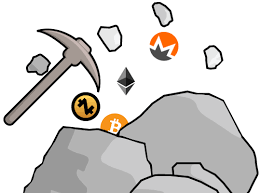We researched data that we think nearly everybody can use. It involves Blockchain, a digital ledger of economic transactions. The blocks in the chain can include almost anything of value, but we’ll concentrate on financial transactions.
Simplify with a breakdown
- Blockchain is a global spreadsheet.
- It tracks the flow of coins and tokens.
- It tracks crypto accounts.
- Miners maintain it with uniquely configured computers.
- Blocks include transactions, sent and received.
Blockchain benefits all of us
It makes everyone accountable: No missed or corrupted transactions, and no more errors (human or machine). All sales are valid.
An apt analogy: Internet 3.0
Blockchain is the invention of several people (pseudonym Satoshi Nakamoto). It is more significant than its original parts. With the technology, digital information is distributed (not copied) and updated endlessly.
The technology is accessible to a massive pool of users, and that’s because potential users do not nee to know how it works.
Distributed database, greater depth
Imagine a spreadsheet shared thousands of times across a network of computers. Benefits:
- The database is not located in one place, making it public and verifiable.
- A hacker cannot corrupt it.
- Millions of computers host the database.
Blockchain is robust
Because blocks are identical across the network, Blockchain is not controlled by a single entity, and it has no point of failure.
New tech in annals of inventions
Invented in 2008. Blockchain operates without disruption. The internet is also durable, based on its 40-year run, and those track records bode well for their evolutions.
Nodes make Blockchain work

A node is a computer connected to the Blockchain. Users validate transactions, and they are transparent.
Blockchain is a robust, second-level network. It is a wholly different vision as to how the internet can function. As a result, it is revolutionary.
Nodes and Bitcoin
Every node works as an administrator. Each has an incentive to win Bitcoins. The internet shares “emails” and information, and also acts as a commercial platform. Blockchain will (and is) evolve as the internet has.
Bitcoin-like cryptocurrencies spawned a range of adaptations. Because of that, many cryptocurrencies are now in use.
Wave of the future
Decentralization will render traditional commerce endangered. The markets could ultimately operate 24/7/365, and all vital records could become public.
User-friendly program
Blockchain is for everyone or nearly everyone. As a result, it has created many jobs and fueled numerous careers. There is a massive demand for more.
Cryptocurrencies are rising in popularity, and so are wallet applications (we recommend OMINEX, the leader in compliance solutions, and wallets).
Enhanced security: It’s key
Protection is necessary for global solutions. It eliminates risks that come with centrally held data, such as hacking.
The internet relies on usernames and passwords. However, Blockchain uses encryption.
A second-level network
Blockchain provides a new layer of internet functionality. Users transact directly with one another.
In 2016, Bitcoin averaged more than $200,000 US per day. The total is still rising (go here for the latest Market Cap showing the hundreds of billions now traded in Bitcoin).
Goldman Sachs reported in 2017 that the technology holds great potential. That could represent global savings of $6 billion per year.
Come on, get involved
 Become a cryptocurrency miner. You don’t need to put capital at risk. Just VISIT HERE.
Become a cryptocurrency miner. You don’t need to put capital at risk. Just VISIT HERE.

